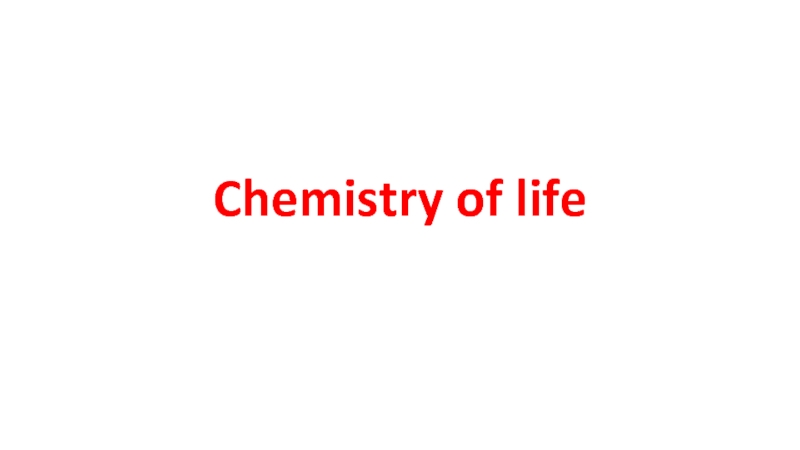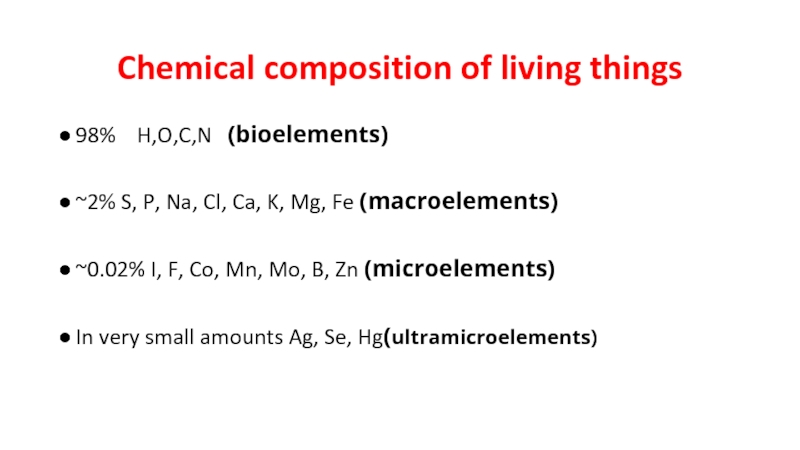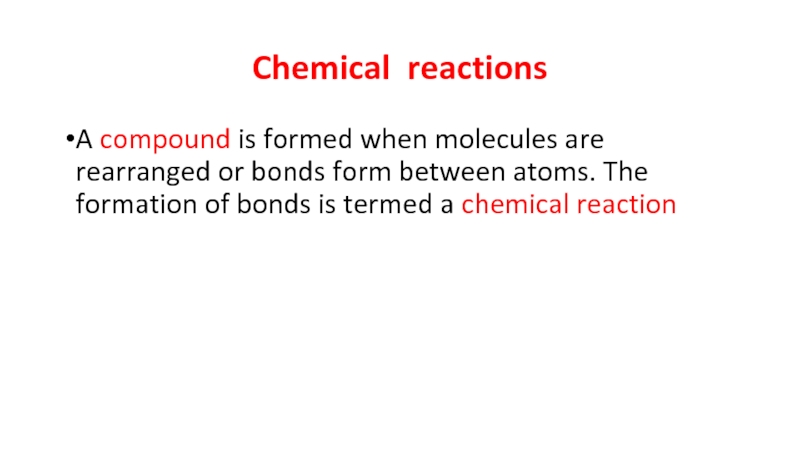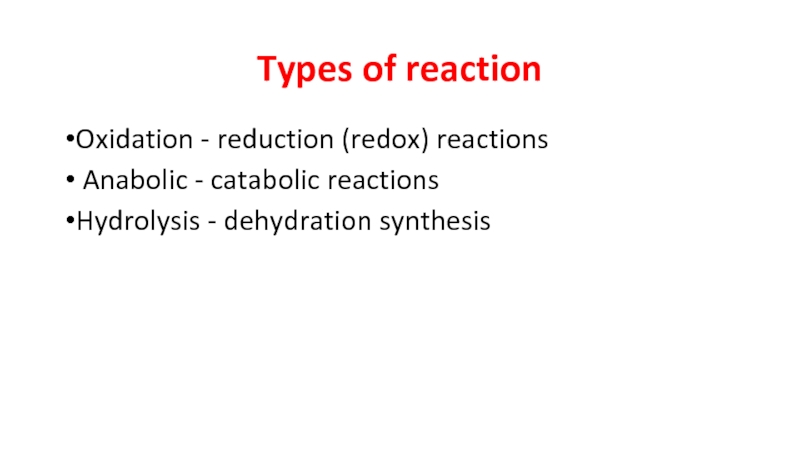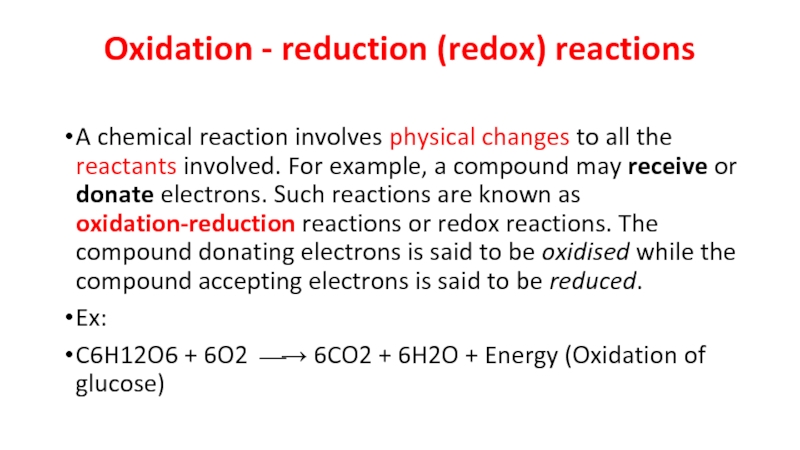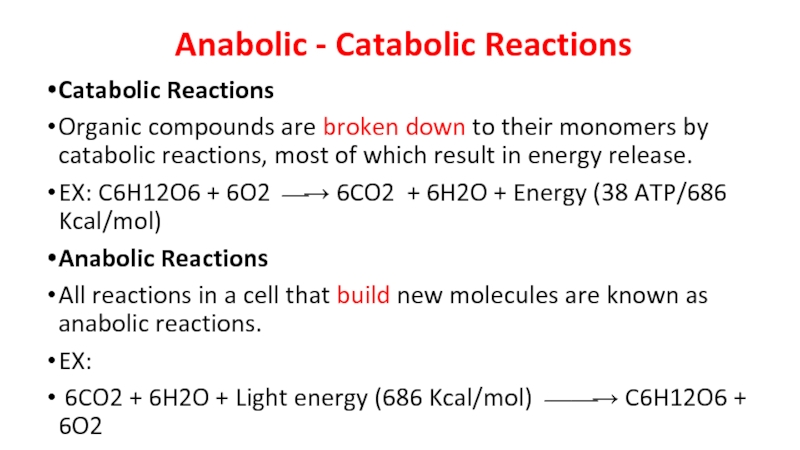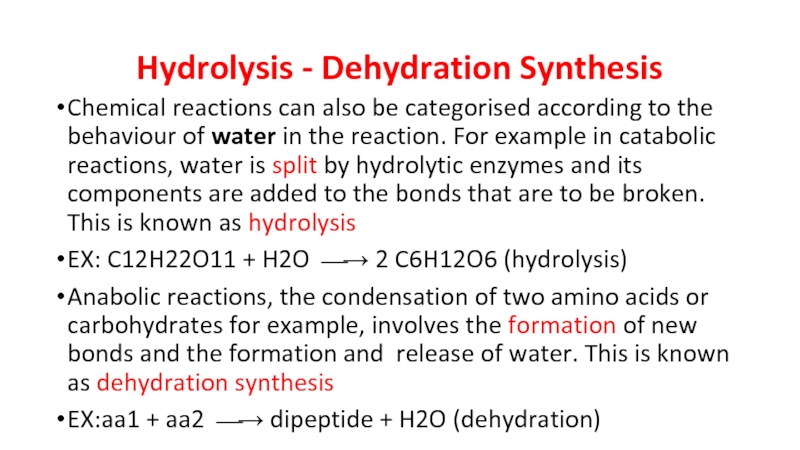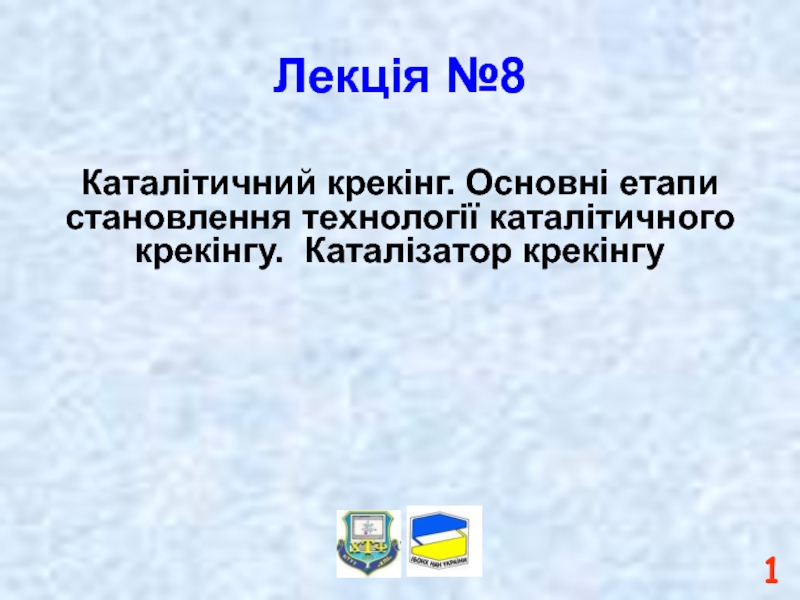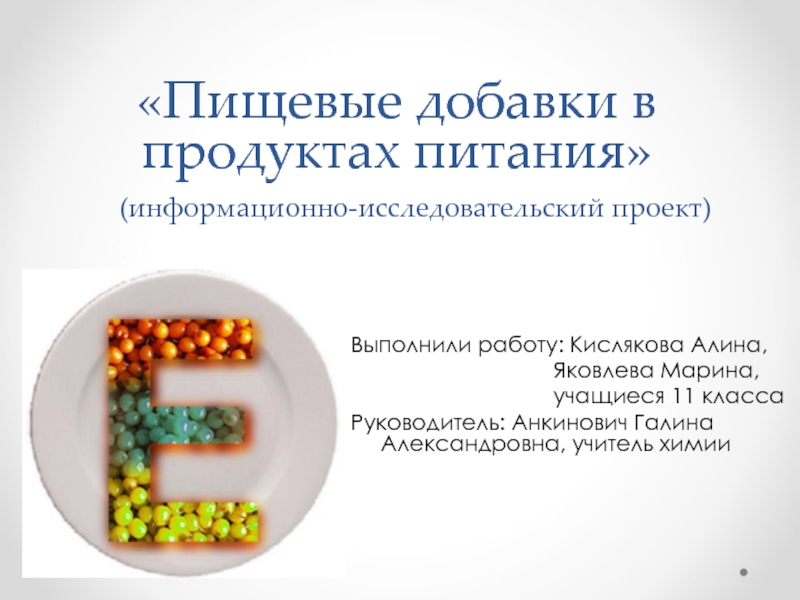- Главная
- Разное
- Дизайн
- Бизнес и предпринимательство
- Аналитика
- Образование
- Развлечения
- Красота и здоровье
- Финансы
- Государство
- Путешествия
- Спорт
- Недвижимость
- Армия
- Графика
- Культурология
- Еда и кулинария
- Лингвистика
- Английский язык
- Астрономия
- Алгебра
- Биология
- География
- Детские презентации
- Информатика
- История
- Литература
- Маркетинг
- Математика
- Медицина
- Менеджмент
- Музыка
- МХК
- Немецкий язык
- ОБЖ
- Обществознание
- Окружающий мир
- Педагогика
- Русский язык
- Технология
- Физика
- Философия
- Химия
- Шаблоны, картинки для презентаций
- Экология
- Экономика
- Юриспруденция
Chemistry of life презентация
Содержание
- 1. Chemistry of life
- 2. Chemical composition of living things 98%
- 3. Chemical reactions A compound is formed when
- 4. Types of reaction Oxidation - reduction (redox)
- 5. Oxidation - reduction (redox) reactions A
- 6. Anabolic - Catabolic Reactions Catabolic Reactions
- 7. Hydrolysis - Dehydration Synthesis Chemical reactions
Слайд 2Chemical composition of living things
98% H,O,C,N (bioelements)
~2% S, P,
Na, Cl, Ca, K, Mg, Fe (macroelements)
~0.02% I, F, Co, Mn, Mo, B, Zn (microelements)
In very small amounts Ag, Se, Hg(ultramicroelements)
~0.02% I, F, Co, Mn, Mo, B, Zn (microelements)
In very small amounts Ag, Se, Hg(ultramicroelements)
Слайд 3Chemical reactions
A compound is formed when molecules are rearranged or bonds
form between atoms. The formation of bonds is termed a chemical reaction
Слайд 4Types of reaction
Oxidation - reduction (redox) reactions
Anabolic - catabolic reactions
Hydrolysis - dehydration synthesis
Слайд 5Oxidation - reduction (redox) reactions
A chemical reaction involves physical changes to
all the reactants involved. For example, a compound may receive or donate electrons. Such reactions are known as oxidation-reduction reactions or redox reactions. The compound donating electrons is said to be oxidised while the compound accepting electrons is said to be reduced.
Ex:
C6H12O6 + 6O2 ⎯→ 6CO2 + 6H2O + Energy (Oxidation of glucose)
Ex:
C6H12O6 + 6O2 ⎯→ 6CO2 + 6H2O + Energy (Oxidation of glucose)
Слайд 6Anabolic - Catabolic Reactions
Catabolic Reactions
Organic compounds are broken down to
their monomers by catabolic reactions, most of which result in energy release.
EX: C6H12O6 + 6O2 ⎯→ 6CO2 + 6H2O + Energy (38 ATP/686 Kcal/mol)
Anabolic Reactions
All reactions in a cell that build new molecules are known as anabolic reactions.
EX:
6CO2 + 6H2O + Light energy (686 Kcal/mol) ⎯⎯→ C6H12O6 + 6O2
EX: C6H12O6 + 6O2 ⎯→ 6CO2 + 6H2O + Energy (38 ATP/686 Kcal/mol)
Anabolic Reactions
All reactions in a cell that build new molecules are known as anabolic reactions.
EX:
6CO2 + 6H2O + Light energy (686 Kcal/mol) ⎯⎯→ C6H12O6 + 6O2
Слайд 7Hydrolysis - Dehydration Synthesis
Chemical reactions can also be categorised according
to the behaviour of water in the reaction. For example in catabolic reactions, water is split by hydrolytic enzymes and its components are added to the bonds that are to be broken. This is known as hydrolysis
EX: C12H22O11 + H2O ⎯→ 2 C6H12O6 (hydrolysis)
Anabolic reactions, the condensation of two amino acids or carbohydrates for example, involves the formation of new bonds and the formation and release of water. This is known as dehydration synthesis
EX:aa1 + aa2 ⎯→ dipeptide + H2O (dehydration)
EX: C12H22O11 + H2O ⎯→ 2 C6H12O6 (hydrolysis)
Anabolic reactions, the condensation of two amino acids or carbohydrates for example, involves the formation of new bonds and the formation and release of water. This is known as dehydration synthesis
EX:aa1 + aa2 ⎯→ dipeptide + H2O (dehydration)
